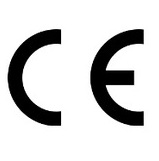CE marking of construction products
What exactly does the CE marking represent?
If a product bears a CE marking, you can assume that the product meets the relevant legal requirements relating to safety, health, and the environment. A CE marking and the accompanying Declaration of Performance list the product's characteristics and performance. In the case of a construction product with a CE marking, this means that you can assume that the product has been tested and evaluated in accordance with European technical methods and/or specifications.
Is a CE marking required for every construction product?
A CE marking is not yet required for all construction products, but within a few years every construction product will have to be given a CE marking for construction products. In conformity with the Construction Products Regulation, a CE marking is required if there is a harmonized European standard for that particular product.
The CE marking Module is an online tool that tells you which harmonized European standard applies to a particular building product.
The Construction Products Regulation is applicable throughout the European Union and can be seen as European law which is not intended to be implemented at the national level.
CE marking and the Declaration of Performance
In addition to the CE marking, the Construction Products Regulation also requires that products have a Declaration of Performance (if there is a harmonized European standard applicable to the product).
The Declaration of Performance, as one might imagine, provides information about the product's performance, and naturally manufacturers and importers provide this information to buyers such as contractors, wholesalers, and private individuals (and possibly also to indirect buyers such as architects).
Are roof access hatches also required to have a CE marking?
Roof access hatches are not yet required to have a CE marking. This is because, as mentioned earlier, there is not yet a harmonized European standard for this product. Of course we are interested in this topic, and therefore we have investigated the process by which a product receives a CE marking.
The first step in this complex procedure is to submit a request to the European Organisation for Technical Approvals (EOTA). Manufacturers and importers of a product submit a request that EOTA formulate a special European Technical Approval Guideline (ETAG) or a Common Understanding of Assessment Procedure (CUAP).
Then, on the basis of this ETAG or CUAP, a European Technical Assessment (ETA) is written or developed on the basis of the ETAG or CUAP. Naturally, manufacturers cannot develop an ETA on their own. This must be done by an independent, notified approval body.
Once an ETA has been delivered for the product, the following step in the procedure is the responsibility of the manufacturer, because a CE marking is a declaration by the manufacturer. Whenever a manufacturer puts a CE marking on its products on the basis of an ETA, that manufacturer is declaring that the product meets the relevant requirements relating to safety, health, and the environment.
As stated earlier, there is no harmonized European standard applicable to roof access hatches, so roof access hatches do not yet require a CE marking. Of course, we are paying close attention to further developments in this area! In the meantime, our roof hatches are naturally bear the KOMO quality mark.
Want to know more about CE marking for construction products and the applicability to roof hatches? Please feel free to contact us.

- 2026 © STAKA Bouwproducten B.V.
- PostAds
- All rights reserved.

 UK
UK Nederlands
Nederlands Deutschland
Deutschland US
US La France
La France


